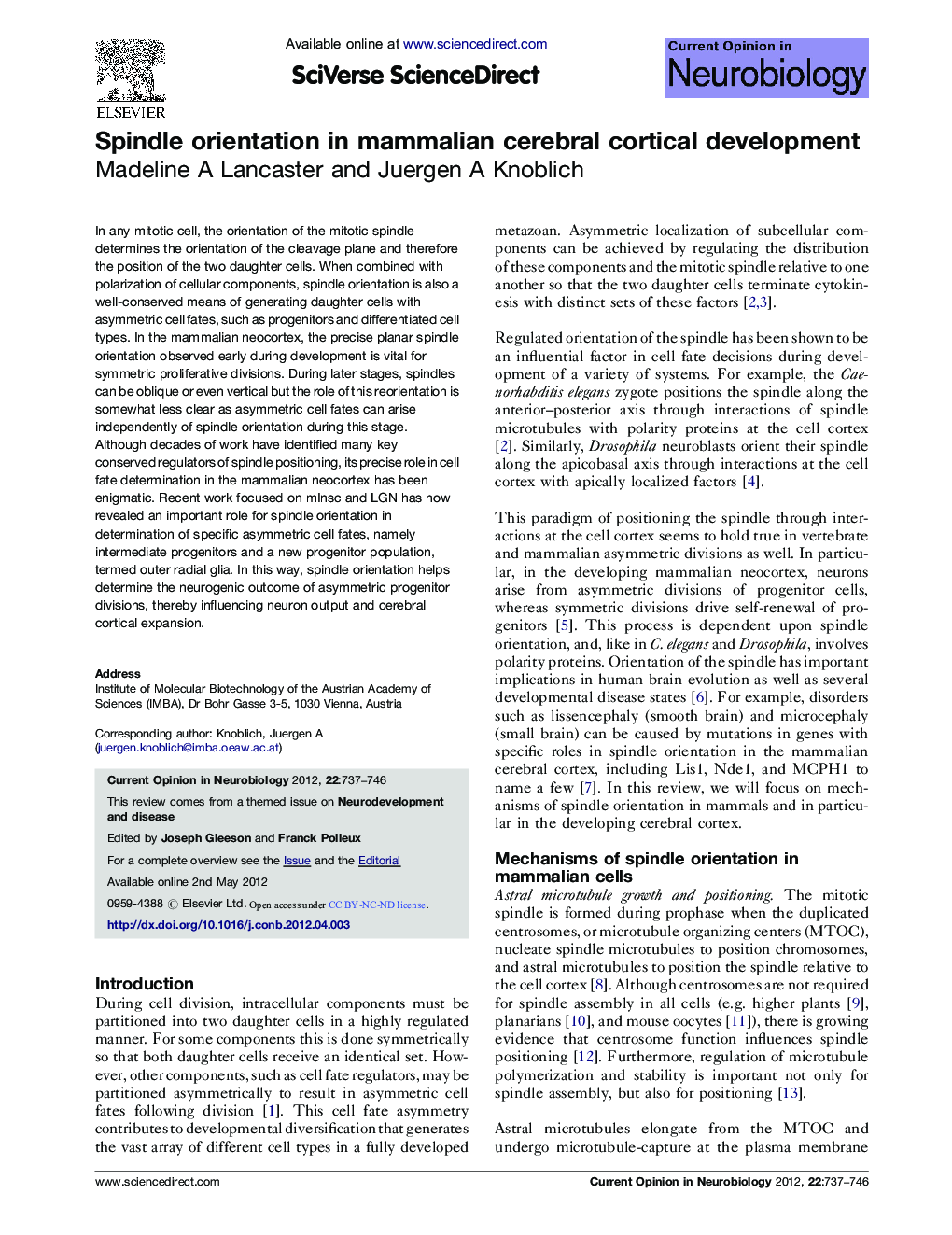| Article ID | Journal | Published Year | Pages | File Type |
|---|---|---|---|---|
| 6267292 | Current Opinion in Neurobiology | 2012 | 10 Pages |
In any mitotic cell, the orientation of the mitotic spindle determines the orientation of the cleavage plane and therefore the position of the two daughter cells. When combined with polarization of cellular components, spindle orientation is also a well-conserved means of generating daughter cells with asymmetric cell fates, such as progenitors and differentiated cell types. In the mammalian neocortex, the precise planar spindle orientation observed early during development is vital for symmetric proliferative divisions. During later stages, spindles can be oblique or even vertical but the role of this reorientation is somewhat less clear as asymmetric cell fates can arise independently of spindle orientation during this stage. Although decades of work have identified many key conserved regulators of spindle positioning, its precise role in cell fate determination in the mammalian neocortex has been enigmatic. Recent work focused on mInsc and LGN has now revealed an important role for spindle orientation in determination of specific asymmetric cell fates, namely intermediate progenitors and a new progenitor population, termed outer radial glia. In this way, spindle orientation helps determine the neurogenic outcome of asymmetric progenitor divisions, thereby influencing neuron output and cerebral cortical expansion.
⺠Spindle orientation is a key mechanism for generating cell diversity and balancing self-renewal and differentiation of neural stem cells. ⺠Regulators of spindle orientation, such as mInsc and LGN, are necessary for balancing planar and oblique orientations in the developing mammalian cerebral cortex. ⺠Spindle orientation influences neuron production and cortical size by regulating production of intermediate progenitors and outer radial glial progenitors.
